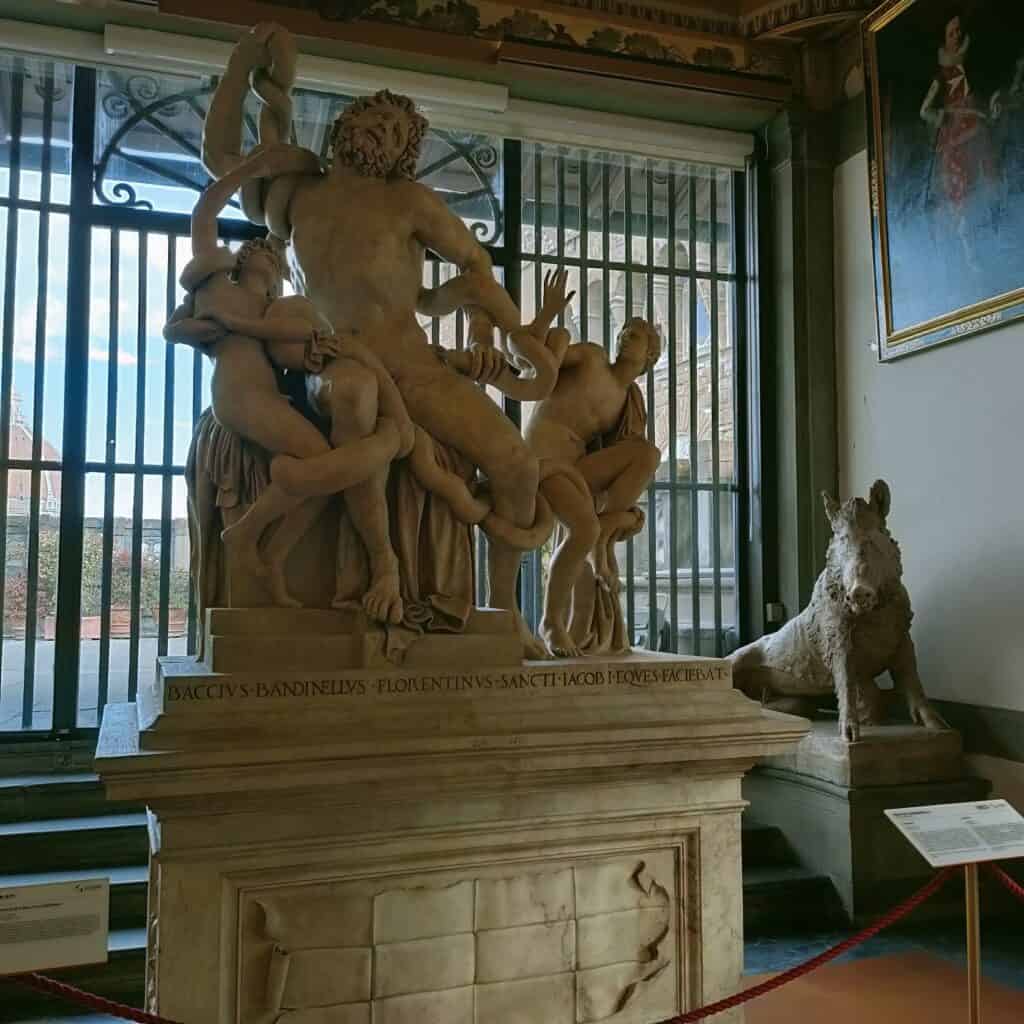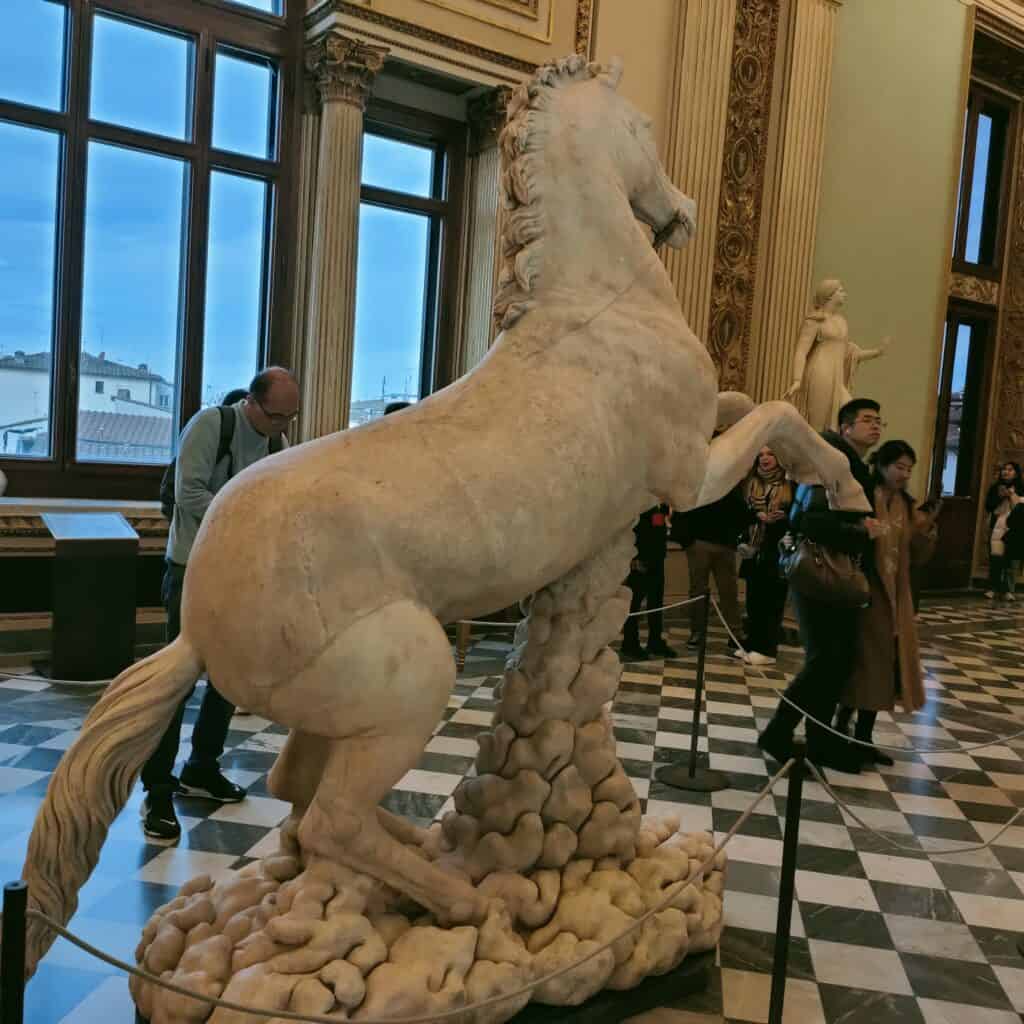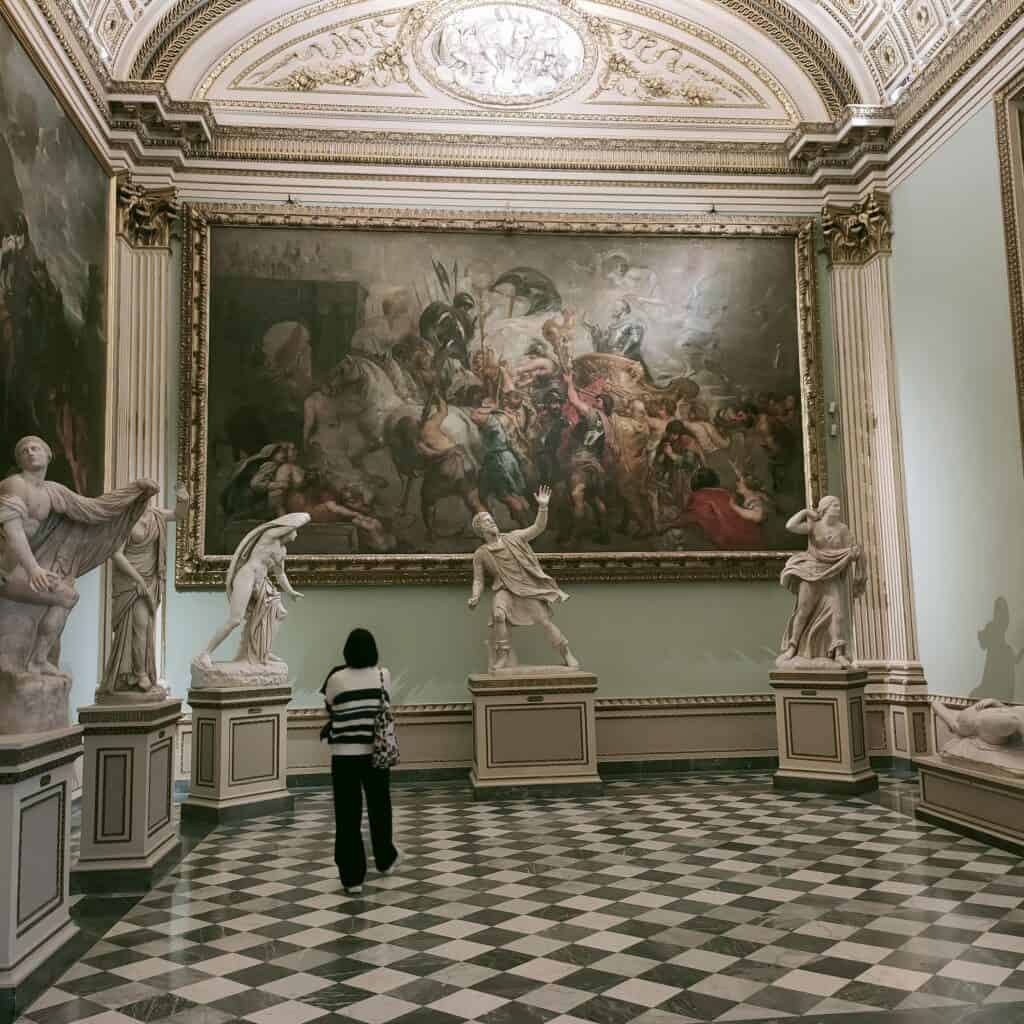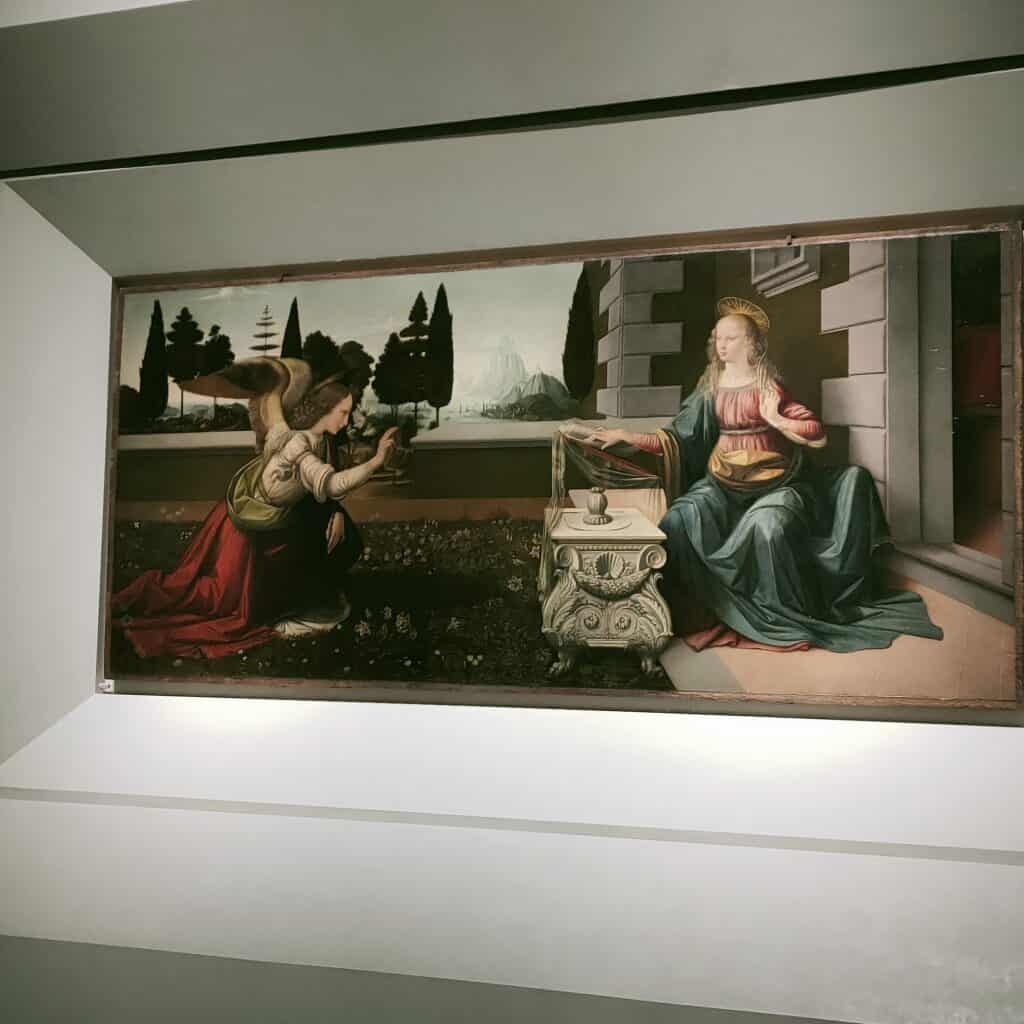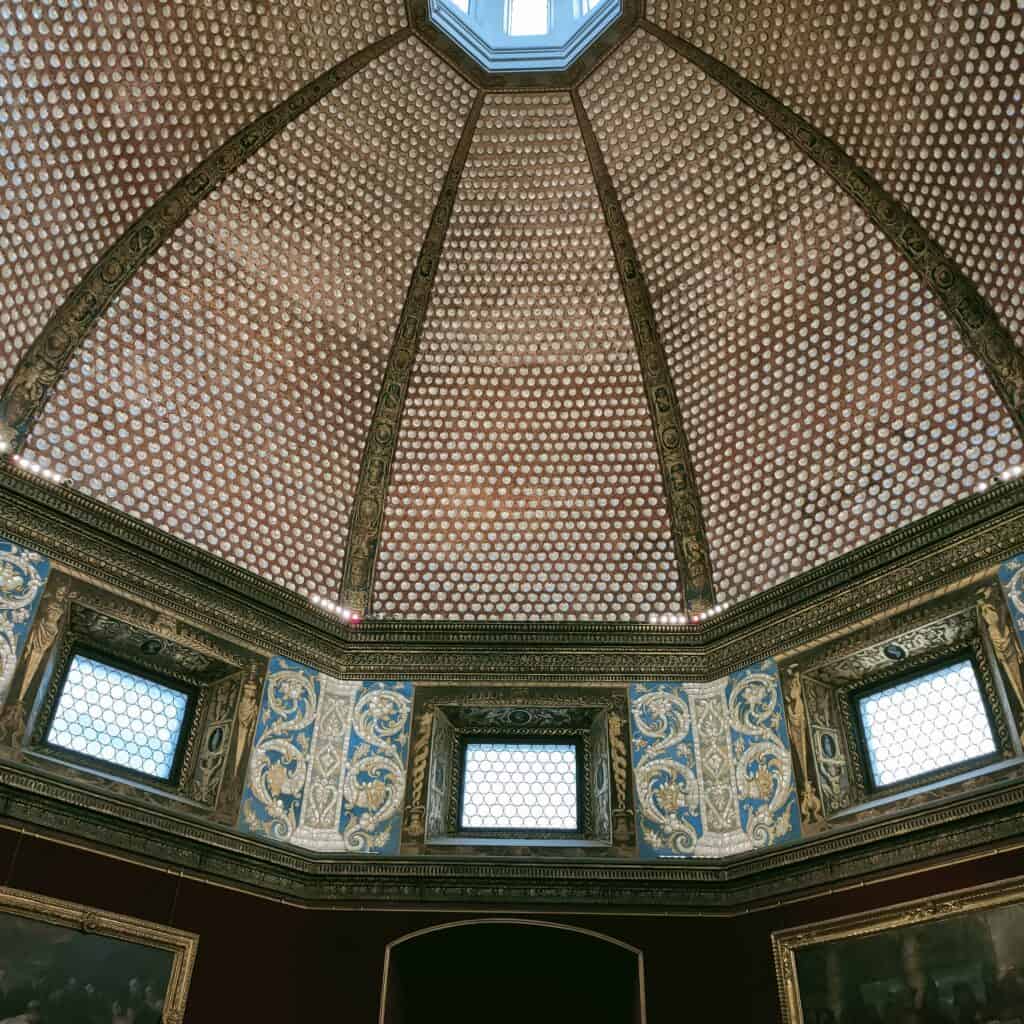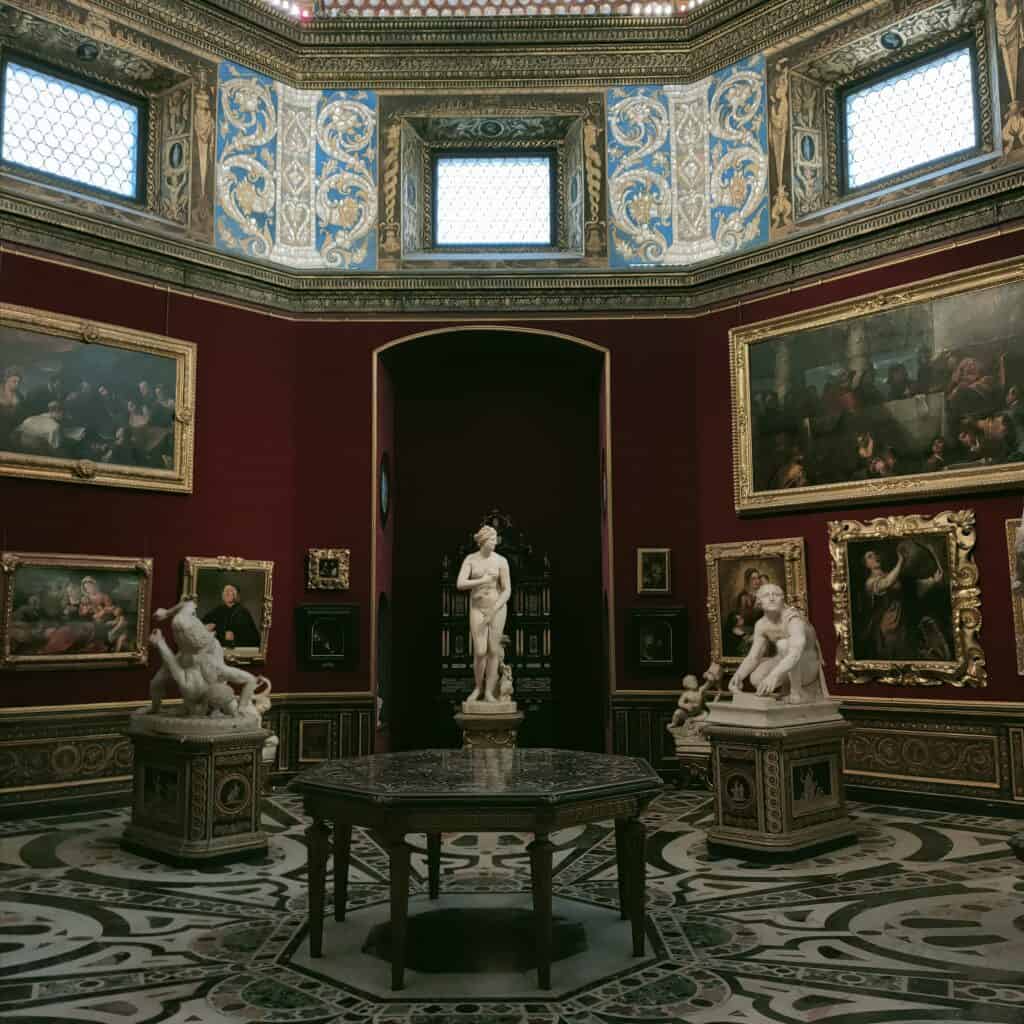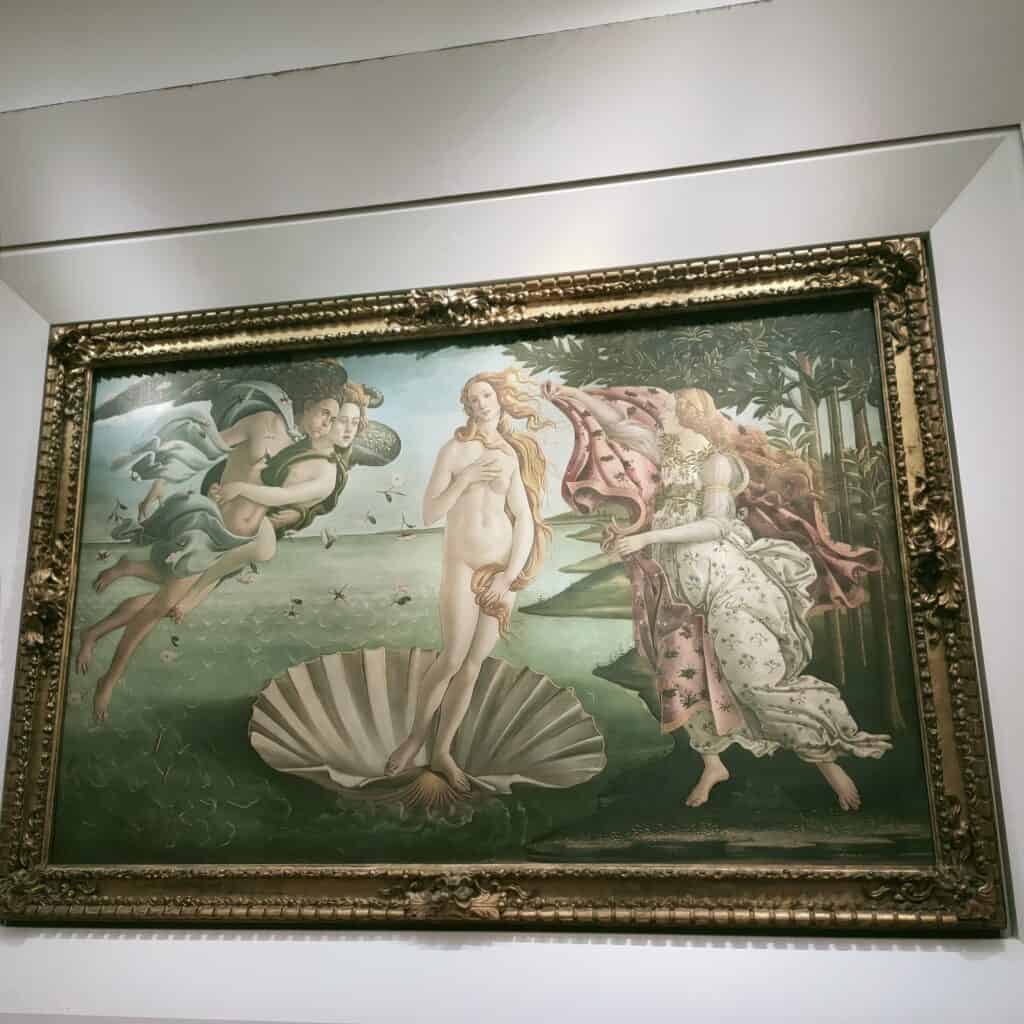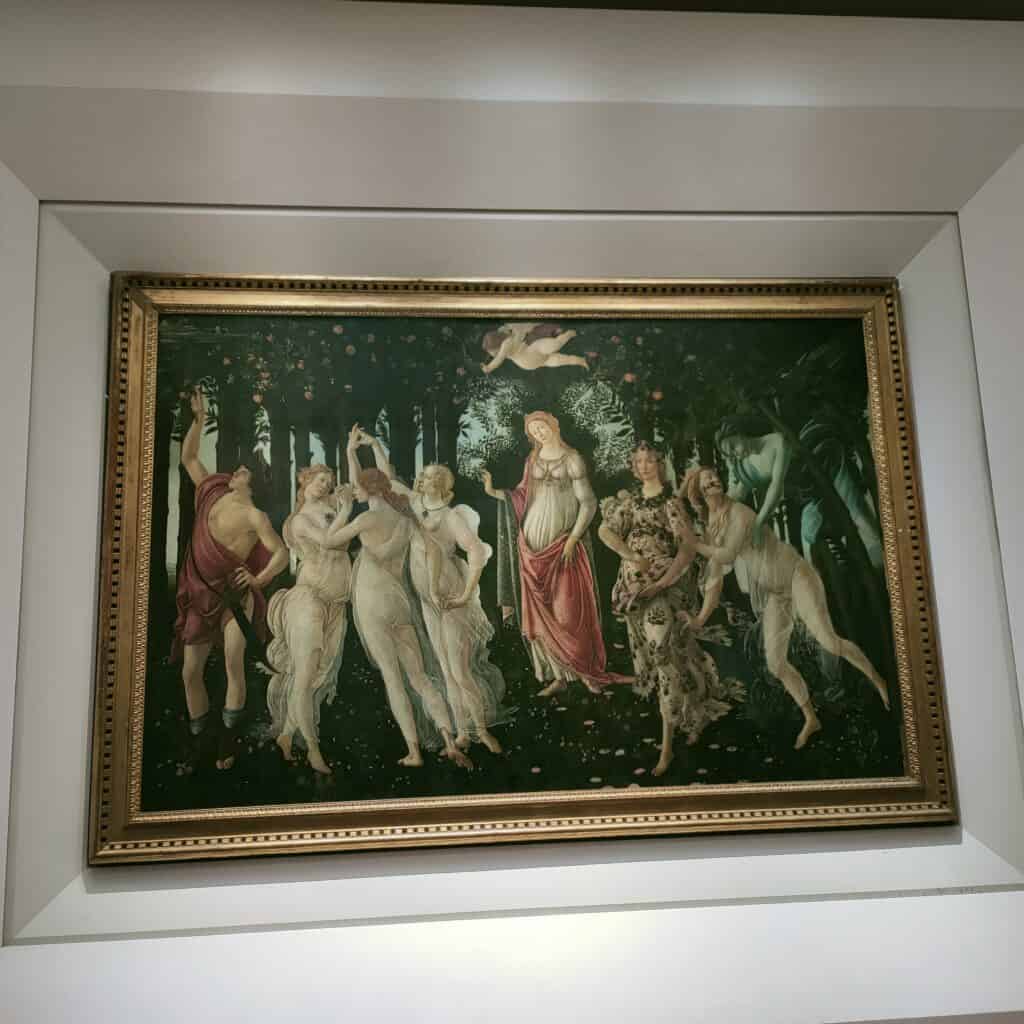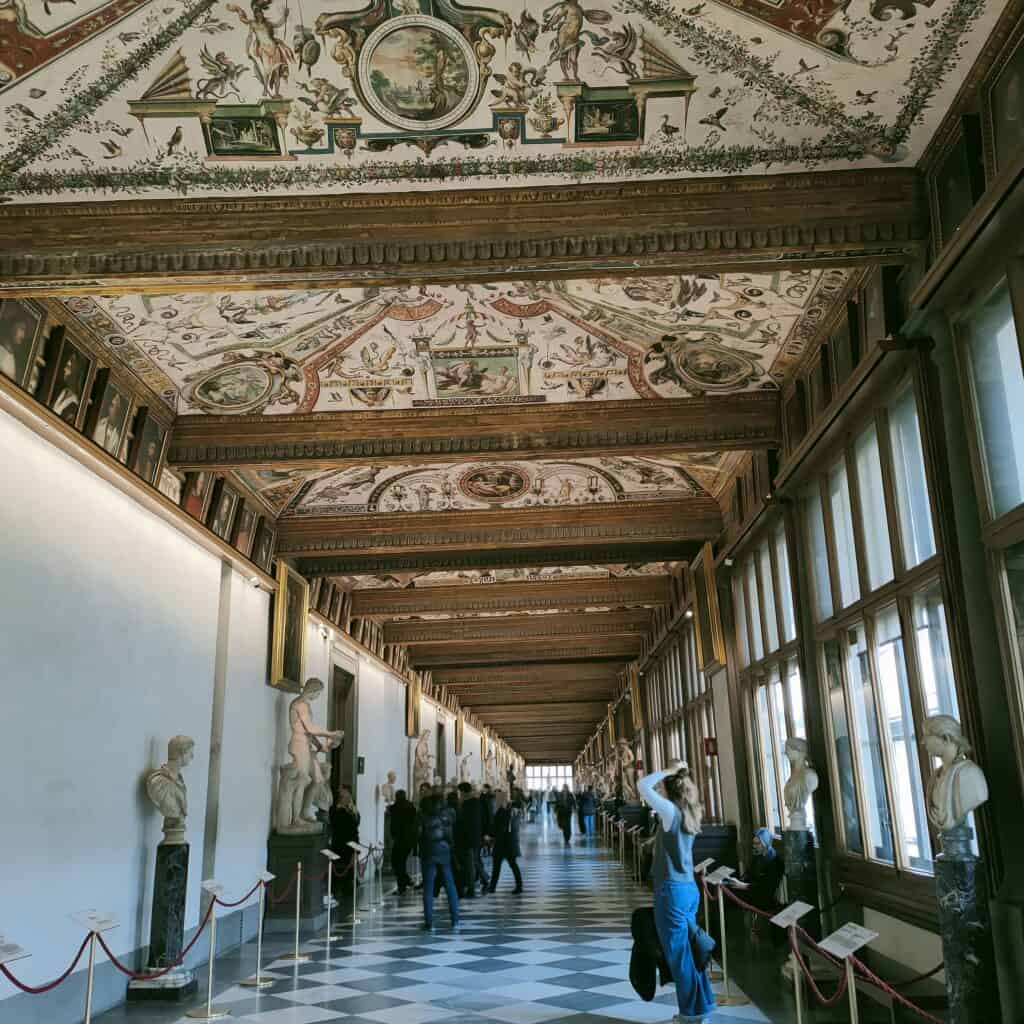Visiting the Uffizi Museum with a professional guide is essential to learn about its history and its exhibition path through different eras and styles but always related to each other.
The guide to the Uffizi museum is a personalized experience that will give you access inside without endless waiting and you will come out full of knowledge and curiosity.
What the Uffizi tour includes
The Uffizi tour lasts about two hours, during which you will be able to visit the most important rooms: we will start with medieval art until we reach the rooms of the late Renaissance.
Among the prominent works, the Majesty by Giotto, the Sant’Anna Metterza by Masaccio and Masolino, the Spring and Venus by Botticelli, the Annunciation by Leonardo da Vinci and the Tondo Doni by Michelangelo.
On the second floor, we’ll stop in the first corridor, the Corridor of the East, to learn about the history of the Museum and to admire the grotesque ceilings, as well as a series of classical sculptures from the Medici collection and portraits of important members of the Medici family.
We will visit the three main rooms of the Middle Ages, respectively that of Giotto, Simone Martini and Gentile da Fabriano with their religious-themed works. We will continue in the Hall of the early Renaissance, that of Masaccio and Masolino, and then continue in those of Botticelli to admire his two masterpieces, the Spring and the Venus. We will continue the route towards the Corridor of Noon and from there we will be able to have a beautiful panoramic view of the city of Florence, its hills and the famous Ponte Vecchio. We will enter the West Corridor to stop in the Leonardo da Vinci Room and, finally, we will end the guided tour in the Michelangelo and Raphael Room where we can admire Michelangelo’s famous Tondo Doni.Before leaving the Museum, a stop on the terrace next to the cafeteria from which we can admire Palazzo Vecchio and its coats of arms of the Guilds of Arts and Crafts.
It is also possible to extend the time of the visit by going to the first floor to continue the journey among the artists of the 1600s and 1770s, including Caravaggio with Medusa and Bacchus.


